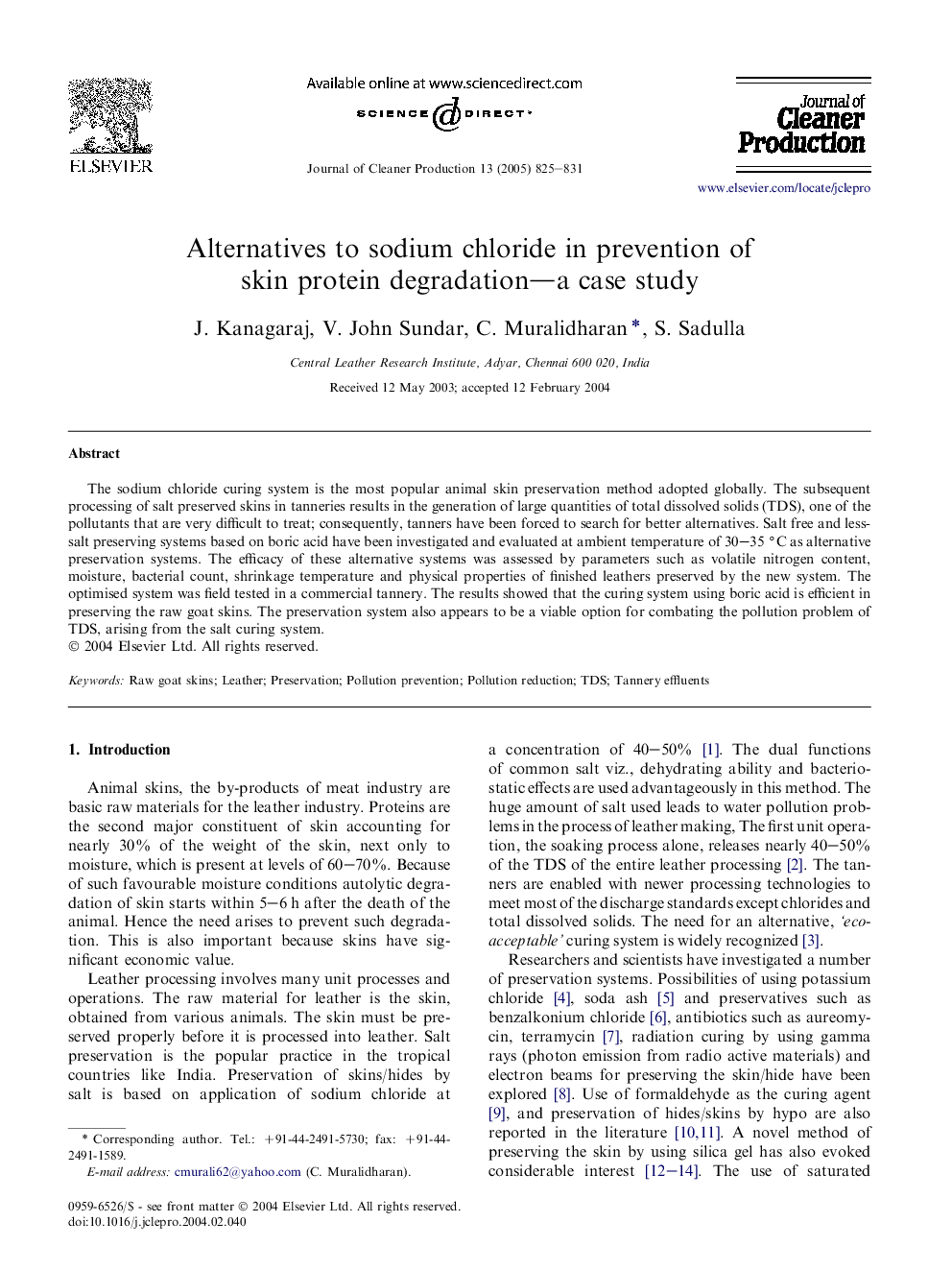| Article ID | Journal | Published Year | Pages | File Type |
|---|---|---|---|---|
| 10688307 | Journal of Cleaner Production | 2005 | 7 Pages |
Abstract
The sodium chloride curing system is the most popular animal skin preservation method adopted globally. The subsequent processing of salt preserved skins in tanneries results in the generation of large quantities of total dissolved solids (TDS), one of the pollutants that are very difficult to treat; consequently, tanners have been forced to search for better alternatives. Salt free and less-salt preserving systems based on boric acid have been investigated and evaluated at ambient temperature of 30-35 °C as alternative preservation systems. The efficacy of these alternative systems was assessed by parameters such as volatile nitrogen content, moisture, bacterial count, shrinkage temperature and physical properties of finished leathers preserved by the new system. The optimised system was field tested in a commercial tannery. The results showed that the curing system using boric acid is efficient in preserving the raw goat skins. The preservation system also appears to be a viable option for combating the pollution problem of TDS, arising from the salt curing system.
Related Topics
Physical Sciences and Engineering
Energy
Renewable Energy, Sustainability and the Environment
Authors
J. Kanagaraj, V. John Sundar, C. Muralidharan, S. Sadulla,
